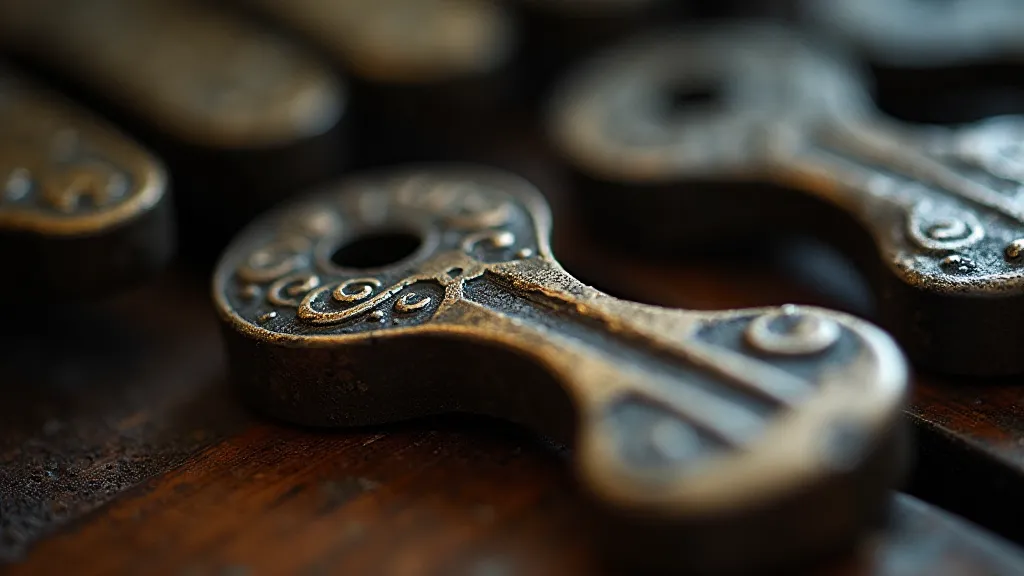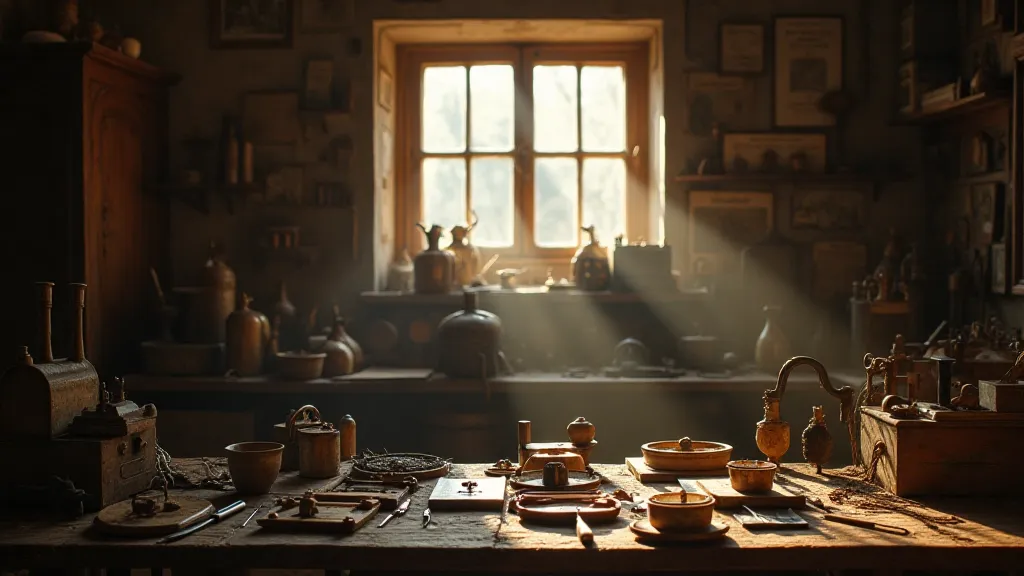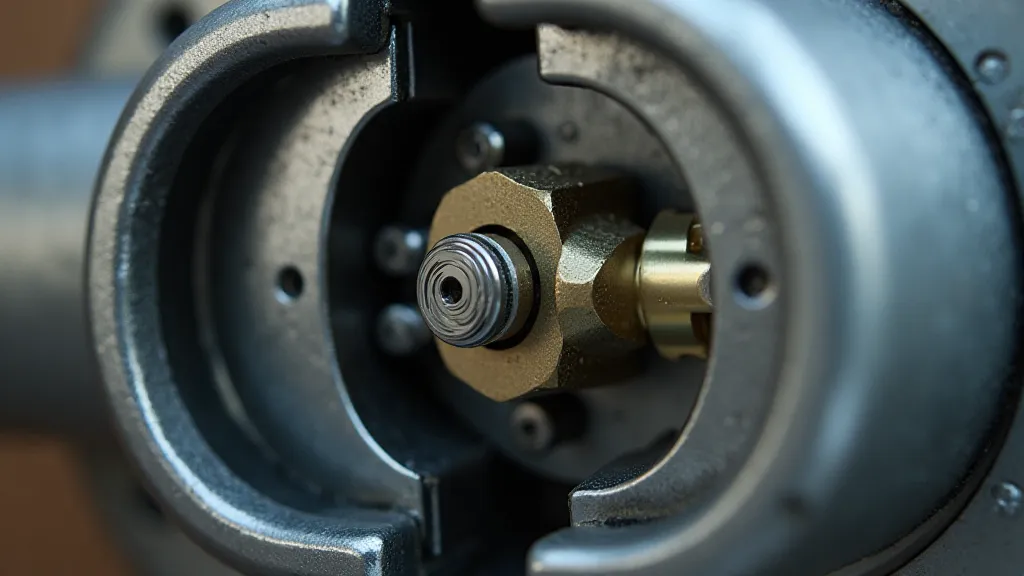A Palimpsest of Security: Layers of Defenses & Their Histories
There's a peculiar beauty to obsolescence, isn’t there? The worn keys of an antique accordion, stiff and unresponsive, yet hinting at a vibrant past of music and laughter. You can almost feel the breath of the musician who once coaxed melodies from its bellows. That feeling – the resonance of history layered upon history – is precisely what I find so compelling about locks. They aren't merely mechanisms for keeping things safe; they are palimpsests, documents overwritten and reworked over centuries, each layer whispering tales of ingenuity, vulnerability, and the enduring human drive to both protect and circumvent.

The First Layers: Simple Security and Ancient Solutions
The earliest ‘locks’ weren’t locks as we understand them today. Think of a pile of stones carefully arranged to prevent access to a cave. That’s a form of security, albeit a rudimentary one. The first true locking mechanisms emerged in ancient Egypt, around 2000 BC. These were pin tumbler locks – surprisingly similar to some we use today. Imagine a wooden box with pegs that had to be aligned correctly to allow a bolt to slide. Simple, yes, but revolutionary for its time. The beauty lies in the fundamental concept: a secret arrangement that grants access only to those who possess that knowledge.
The Romans adopted and refined these systems, incorporating them into their elaborate fortifications and domestic security. They understood that security wasn’t just about the lock itself; it was about the perception of security. A visible, complex-looking lock, even if easily bypassed, could deter casual attempts at intrusion. And, of course, the more complex the lock, the more skilled the person needed to pick it – a nascent arms race was already underway.
The Medieval Era: Complexity and Craftsmanship
The medieval period saw an explosion of ingenuity in lock-making. As wealth increased, so did the desire to protect it. Iron replaced wood, and locks became larger, more intricate, and often works of art. Cheval locks, with their distinctive horse-shoe shape, became popular, offering a degree of protection against simple manipulation. The skill of the blacksmith was paramount; each lock was a testament to his craft.
This era also marked the beginning of more sophisticated picking tools. While we often imagine elaborate sets of instruments, early bypasses were often simple probes fashioned from pins, levers, or even sharpened twigs. The fundamental principle remained the same: understanding the internal mechanism and manipulating it to achieve the desired result.
The Renaissance and the Rise of the Master Locksmith
The Renaissance brought a renewed focus on knowledge and innovation. The art of lock-making flourished, evolving from a blacksmith's trade to a specialized craft practiced by master locksmiths. These individuals were not just skilled artisans; they were also guardians of knowledge, passing down the secrets of their trade through apprenticeships.
The development of keyways became more sophisticated, incorporating wards – obstructions designed to prevent the use of unauthorized keys. However, this merely spurred the pickers to become more ingenious. The relationship between lock creators and bypassers became an escalating dance of innovation and adaptation.

The Industrial Revolution and Mass Production
The Industrial Revolution dramatically altered the landscape of lock-making. Mass production techniques brought down the cost of locks, making them accessible to a wider population. While this increased overall security, it also led to a decline in the quality of craftsmanship. Many locks became simpler, less robust, and more vulnerable to bypass.
However, the industrial age also spurred innovation in security technologies. The development of pin tumbler locks with serrated keys offered a significant improvement in security, though they weren’t impervious to picking. The sheer volume of locks being produced also created a larger pool of potential bypassers, some motivated by profit, others simply by curiosity.
Modern Security and the Continuing Arms Race
Today’s security technologies are incredibly sophisticated. Electronic locks, biometric scanners, and complex multi-layered systems are commonplace. Yet, even these systems aren’t infallible. The ingenuity of security bypassers continues to challenge the boundaries of what’s possible.
Consider the parallels with antique accordions. Modern digital synthesizers can replicate a wide range of sounds, but they lack the unique character and soul of an old, well-loved instrument. Similarly, while modern security systems offer a higher level of protection, they often lack the charm and craftsmanship of the locks that came before. There's a certain poetry in the struggle – the constant push and pull between security and circumvention, each side learning from the other, each layer adding to the palimpsest of our collective history.
The ethical considerations surrounding lock picking are crucial. Understanding how locks work is a fascinating pursuit, a window into the history of human ingenuity. However, the knowledge should be used responsibly, respecting the rights and property of others. It’s a powerful tool, and like any powerful tool, it must be wielded with caution and respect.

Collecting and Restoration: Preserving the Past
For those with an appreciation for history and craftsmanship, collecting antique locks and tools can be a rewarding hobby. Many old locks can be restored to working order, allowing a tangible connection to the past. The process of restoration requires patience, skill, and a deep understanding of the lock’s internal workings. It’s a journey of discovery, revealing the secrets held within these silent guardians.
Just as a skilled accordion repairman can breathe new life into a forgotten instrument, a meticulous locksmith can preserve the legacy of these ingenious devices, ensuring that the palimpsest of security continues to tell its story for generations to come.





